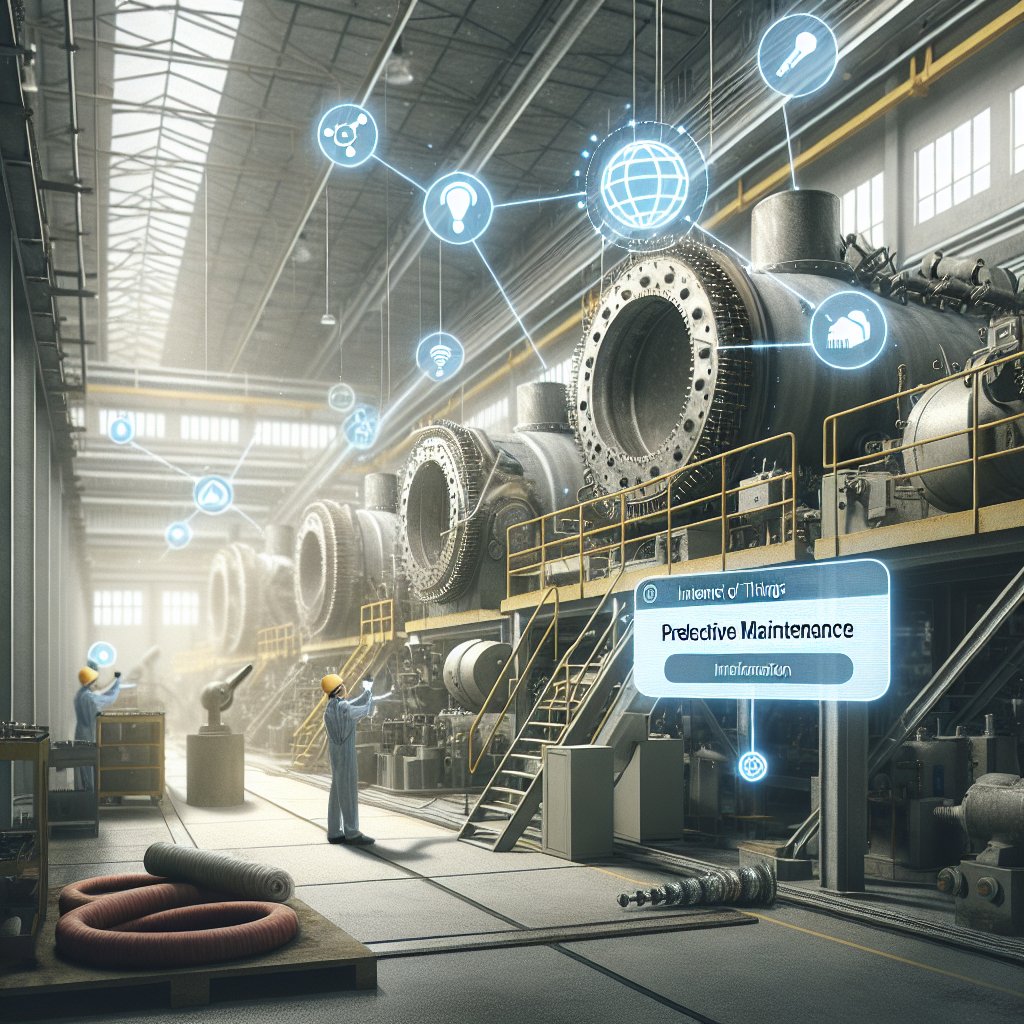
The Internet of Things (IoT) is revolutionizing the way industries approach predictive maintenance of their equipment. By leveraging IoT technologies, companies can now monitor the health and performance of their machinery in real-time, leading to significant improvements in operational efficiency and cost savings. This article explores the transformative role of IoT in predictive maintenance, highlighting its benefits, challenges, and future prospects.
Understanding Predictive Maintenance
Predictive maintenance is a proactive approach to maintaining industrial equipment, where maintenance activities are performed based on the actual condition of the equipment rather than on a fixed schedule. This method relies on data-driven insights to predict when a machine is likely to fail, allowing for timely interventions that prevent unexpected breakdowns and minimize downtime.
Traditionally, predictive maintenance has been challenging due to the lack of real-time data and the complexity of analyzing equipment performance. However, with the advent of IoT, industries can now collect and analyze vast amounts of data from connected devices, enabling more accurate predictions and efficient maintenance strategies.
The Shift from Reactive to Predictive Maintenance
In the past, many industries relied on reactive maintenance, where repairs were made only after equipment failure occurred. This approach often led to costly downtime and emergency repairs, impacting productivity and profitability. Scheduled maintenance, while more proactive, still posed challenges as it did not account for the actual condition of the equipment, leading to unnecessary maintenance activities and potential over-servicing.
IoT has facilitated a shift towards predictive maintenance by providing real-time data on equipment performance. Sensors embedded in machinery collect data on various parameters such as temperature, vibration, and pressure, which are then transmitted to a central system for analysis. Advanced analytics and machine learning algorithms process this data to identify patterns and predict potential failures, allowing maintenance teams to address issues before they escalate.
Benefits of IoT-Enabled Predictive Maintenance
The integration of IoT in predictive maintenance offers numerous benefits that enhance operational efficiency and reduce costs. Some of the key advantages include:
- Reduced Downtime: By predicting equipment failures before they occur, IoT-enabled predictive maintenance minimizes unplanned downtime, ensuring continuous production and reducing the impact on revenue.
- Cost Savings: Timely maintenance interventions prevent costly repairs and extend the lifespan of equipment, resulting in significant cost savings for industries.
- Improved Safety: Monitoring equipment health in real-time helps identify potential safety hazards, allowing for prompt corrective actions that enhance workplace safety.
- Optimized Maintenance Schedules: Data-driven insights enable maintenance teams to optimize their schedules, focusing resources on equipment that requires attention and avoiding unnecessary maintenance activities.
- Enhanced Asset Management: IoT provides a comprehensive view of equipment performance, enabling better asset management and informed decision-making regarding equipment upgrades and replacements.
Challenges in Implementing IoT for Predictive Maintenance
Despite its numerous benefits, implementing IoT for predictive maintenance is not without challenges. Industries must address several issues to fully leverage the potential of IoT technologies:
Data Management and Integration
The vast amount of data generated by IoT devices can be overwhelming, requiring robust data management systems to store, process, and analyze the information. Integrating IoT data with existing enterprise systems is also crucial for seamless operations, but it can be complex and resource-intensive.
Security and Privacy Concerns
With the increased connectivity of industrial equipment, cybersecurity becomes a critical concern. Protecting sensitive data from cyber threats and ensuring the privacy of information are paramount to maintaining trust and reliability in IoT systems.
Scalability and Interoperability
As industries expand their IoT deployments, scalability becomes a key consideration. Ensuring that IoT solutions can scale to accommodate growing data volumes and device numbers is essential. Additionally, achieving interoperability between different IoT devices and platforms is necessary for a cohesive and efficient predictive maintenance strategy.
Future Prospects of IoT in Predictive Maintenance
The future of IoT in predictive maintenance looks promising, with advancements in technology and increased adoption across industries. As IoT devices become more sophisticated and affordable, more companies are expected to embrace predictive maintenance strategies to enhance their operations.
Emerging technologies such as artificial intelligence (AI) and machine learning will further enhance the capabilities of IoT-enabled predictive maintenance. These technologies can provide deeper insights into equipment performance, enabling even more accurate predictions and automated maintenance actions.
Moreover, the development of 5G networks will facilitate faster and more reliable data transmission, supporting real-time monitoring and analysis of industrial equipment. This will enable industries to respond more quickly to potential issues, further reducing downtime and improving efficiency.
In conclusion, the Internet of Things is playing a pivotal role in transforming predictive maintenance of industrial equipment. By providing real-time data and advanced analytics, IoT enables industries to optimize their maintenance strategies, reduce costs, and improve operational efficiency. As technology continues to evolve, the potential for IoT in predictive maintenance will only grow, offering exciting opportunities for industries to enhance their competitiveness and sustainability.

